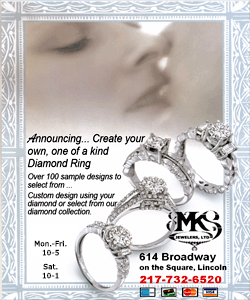|
 Burberry, Erdem and Marchesa showcased spring-summer
collections that drew on the countryside -- plants, flowers and
botany -- for their abstract prints, embroidery and lavishly
embellished gowns. Burberry, Erdem and Marchesa showcased spring-summer
collections that drew on the countryside -- plants, flowers and
botany -- for their abstract prints, embroidery and lavishly
embellished gowns.
"It's just a very romantic, feminine season and the idea of
looking at the world through the joyous lens through all of the
great clothes that we are seeing," U.S. luxury department store
Neiman Marcus's Fashion Director, Ken Downing, said.
"The whole story of pattern-mixing is also prevalent. It can be
wide stripes with narrow stripes, big flowers with small
flowers, or many times mixing stripes with flowers or even
animal prints together at one time," he said.
Sportswear influences also featured heavily, with designers
Richard Nicoll, Jasper Conran and British retailer Topshop's
up-market Unique label showing hooded anoraks, jersey dresses
and cycling tops in colors from bold primaries to chalky
pastels.

"Sporty is still a trend, ever since Celine ushered it in a few
seasons ago and has been going strong -- you see a lot of
editors in sneakers and track pants -- and we are still seeing
that on the runway," fashion magazine Lucky's Editor-in-Chief,
Eva Chen, told Reuters.
Designers also embraced a more relaxed attitude toward dressing
up, with wide-legged trousers, loosely fitted sheer blouses and
voluminous dresses featuring pleating and digital prints in
ochre, coral, pink, aqua and purple.
These were paired with boxy cropped jackets, silky trench coats
and flat shoes along with hand-finished details, a feature
designers were keen to point out as a counter to the fact that
hot-paced growth in demand for luxury goods is waning.
Growth in the global luxury market is expected to rise by 4 to 6
percent in 2014, a far cry from the elevated levels of
double-digit growth seen five to 10 years ago, according to a
report by consultancy Bain and Co.
"While the days of 40 percent spending growth from Chinese
visitors have seemingly and perhaps naturally come to an end,
the Chinese remain the UK's biggest spenders on luxury," British
luxury goods association Walpole's Chief Executive, Michelle
Emmerson, said.
[to top of second column] |
 "Sustained growth in the region of 10 to 15 percent can still
be expected from these high-spending tourists," she said,
referring to shoppers from Asia in Europe and the United States.
Australian designer Emilia Wickstead whose gowns are worn by
Catherine, Duchess of Cambridge, said she was seeing demand in
all her ranges and was not concerned about the cooling down.
"There is a little bit of that niche in the luxury market for
the price point that we sell at and so we've got the
made-to-order, the made-to-measure and the ready-to-wear and so
far it's been fantastic, so not a concern," she told Reuters.
Designers are also focusing more on accessories such as handbags
and shoes as luxury department stores look to beef up their
offerings after seeing a significant rise in demand.
"The demand for women's footwear over the past five years has been
exceptional, so much so that we have recently opened a new floor
dedicated to shoes," department store Harrods' Fashion Director,
Helen David, said.
Accessories designer Anya Hindmarch, who is known for quirky
presentations of her luxurious handbags, said her business was
seeing growth all over the world, particularly in Japan, the United
States and Hong Kong, and that she expected to outperform the luxury
market over the next few years.
"The product is really bubbling at the moment, so we are having a
really great time," she told Reuters at her show featuring spinning
neon teacups and glow-in-the-dark skeletons.
"We are still a brand that is growing, so there is always
opportunity, there is lots to do and it's a really exciting time,"
she said.

(Additional reporting by Lotte Williams and Ed Baran; Editing by
Louise Ireland)
[© 2014 Thomson Reuters. All rights
reserved.] Copyright 2014 Reuters. All rights reserved. This material may not be published,
broadcast, rewritten or redistributed. |